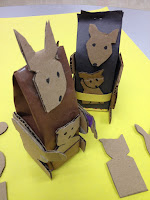Name of School
District:
Parkway School District
Date of Meeting
Attended:
Wednesday August 27, 2014 7:00 – 9:00 p.m.
Brief
Description of What was Discussed: Regular meetings of the board of
education are held monthly at Parkway Central Middle School as designated in
the board meeting calendar, They and are open to the public. In addition,
all meetings are streamed live on Parkway's website. (I was able to get a
preview of a typical meeting but technology prevented me from sitting through
more than the opening remarks of an archived video of the June meeting.) Meetings
begin at 7:00 p.m. unless otherwise specified.
Public
comments are welcome at each regular board meeting during the period designated
for citizen statements. To address the board, a sign-up sheet is provided
between 6:30 p.m. and 7:00 p.m. at the entry table. Citizens will be
called to the podium by the board president to make their statement.
Those who address the board are also asked to provide a written
statement. Those who do not wish to address the board may fill out the
comment sheet located at the sign-in table.
The
board consists of the following seven people: Beth Feldman, President (Term
Expires 2015, appointed 2008, elected 2009); Chris Jacob, VP (Term Expires
2017, elected 2008); Kim Applebaum, Director (Term expires 2016, elected 2010);
Tom Applebaum, Director (Term expires 2016, elected 2010); Dee Mogerman,
Director (Term expires 2017, appointed 2004, elected 2005); Deborah Hopper, Director
(Term expires 2017, elected 2014); and Sam Sciortino, Ph.D., Director (Term
Expires 2016, elected 2010). Also present was Superintendent Keith Marty.
This
meeting I noted was, somewhat predictably, efficient. This is clearly not the
forum for debate as much as a public demonstration of the civilized and orderly
bureaucracy of managing a district that includes 5 high schools and somewhere
in the neighborhood of 17,000 students.
The
agenda, neatly printed on two sides of a single sheet of paper included
housekeeping items like call to order, roll call, pledge of allegiance; special
recognitions for a group of boy scouts in attendance and efforts on behalf of
the American Heart Association. A long list of action items were quickly voted on,
such as board approval of minutes of past meeting, unanimous votes in favor of
purchases of supplies, transportation and a variety of other items that seemed
essential to the ongoing business of running the various schools.
The
biggest items for the evening came later in the meeting: Approval of
Comprehensive Assessment Plan; A preliminary discussion of Math Program
Evaluation and an SSD Public Review Committee Report. Surely these topics
represent highly charged issues for which there are widely divergent views.
Perhaps
the most impressive thing about this group, it seems, is a cohesive agreement
to stay on a course forged by the creation of a comprehensive strategic plan.
In addition to the plan itself, Parkway appears to have done a pretty good job
of elevating their brand by communicating with stakeholders in clear, concise
terms. As it happens, I am familiar with the firm UPbrand that proudly assisted
in helping the Parkway School District. They described the assignment as
follows on their website:
Parkway School District has long been viewed
as one of the top public districts in the country. As part of their on-going
evolution, they embarked on an ambitious strategic planning process that led to
the re-conception of the core elements and process of delivering a top-notch
public education.
Having codified their new direction, it was
time to generate excitement about the new approach among the community and
their key constituents.
Personal
Reflection on the role of the School Board:
Before attending the
meeting, I was sure that I would feel like an outsider sitting in on a board meeting
of the Parkway School District. Both of my children are graduate products of
Parkway West High School (Classes of 2000 and 2004).
Parkway School District
was my second choice for this assignment. I had hoped to attend a Special
School District board meeting until I learned those meetings are scheduled on
Tuesday nights in direct conflict with EDU
211 Foundation of Education with David L. Shields, Ph.D. Fortunately, the
special report on the partnership
between Parkway and SSD was on the agenda that evening.
When we
relocated to St. Louis at the end 1996 we, like so many others who move, were
heavily influenced by the perceived quality and reputation of the public school
where our kids would attend high school. It never occurred to me to get more
involved than a typical parent attending periodic open houses, teacher
conferences and athletic events. With this experience I am struck by the
tremendous responsibility these seven school board leaders have in delivering
on the Mission Statement spelled out in the well designed and crafted Strategic
Plan brochure online:
TO ENSURE ALL STUDENTS ARE CAPABLE, CURIOUS AND
CONFIDENT LEARNERS WHO UNDERSTAND AND RESPOND TO THE CHALLENGES OF AN
EVER-CHANGING WORLD.
More than 400 Project Parkway volunteers helped
develop Parkway's mission, vision and strategic plan, which will guide our work
through 2016. We have also revitalized Parkway’s brand with a new logo and
tagline to better reflect our mission and vision for students.(1)
(1) Parkway Schools. Higher Expectations.
Brighter Futures. A printed copy of this brochure was available at the meeting
and is offered as an exhibit.
(2) The agenda for 8/27/2014 board meeting
is also provided.
This
report was prepared by Wesley A. Morgan in accordance with assignment as described
in the Syllabus provided by the professor on the first night of class August
18, 2014













